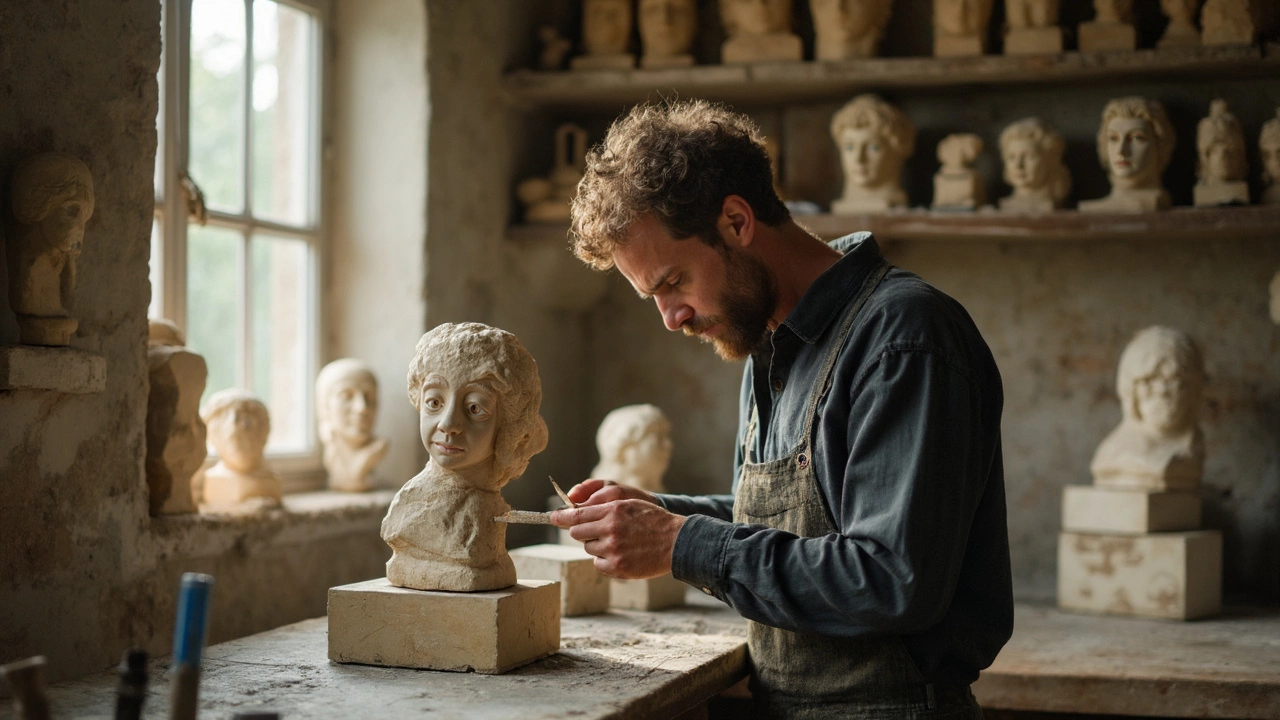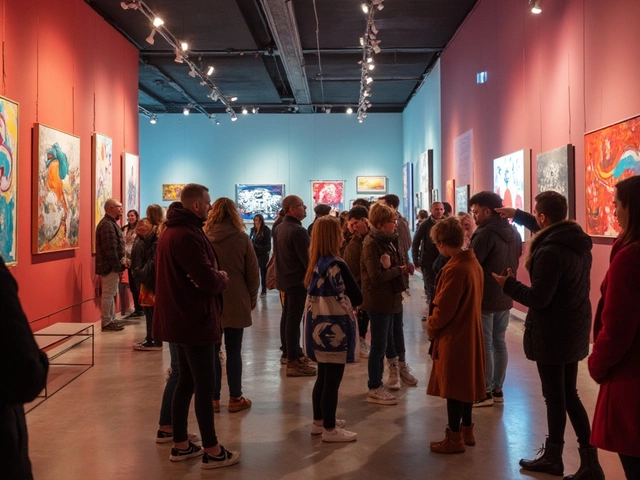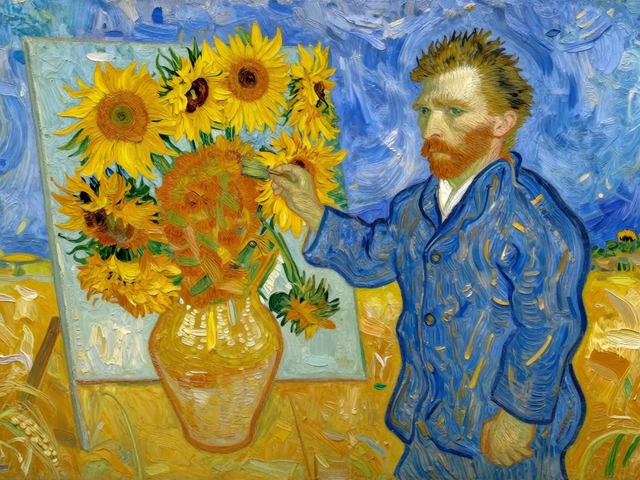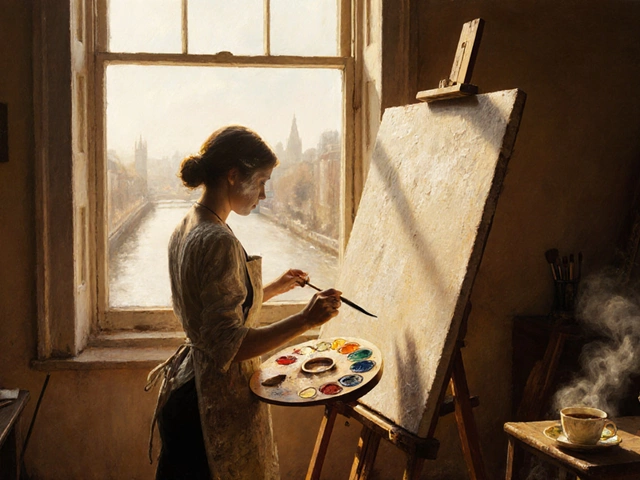Sculpture might seem like just another art form, but there's way more to it than meets the eye. It's like playing with clay when you're a kid but taken to a whole new level. Imagine turning a shapeless block of marble or a lump of clay into something lifelike or abstract that makes people stop and stare. Pretty cool, right?
So, what kind of artist gets their hands dirty in this world? The traditional ones love classic materials like stone or bronze, chiseling away to create something that stands for generations. But don’t be fooled—there's a whole bunch of modern artists out there experimenting with all kinds of stuff, from recycled junk to digital 3D prints. It’s not just about skill, but also about seeing potential where others might see nothing but raw material.
If you’ve ever thought about trying your hand at sculpting, you’ll need patience and a good eye for detail. And don’t worry if it doesn’t look like a Michelangelo at first go! Every great sculptor started somewhere, usually with a lot of trial and error. So, grab a chunk of clay, maybe a tool or two, and see where your imagination takes you!
- Traditional Sculptors
- Contemporary Innovators
- Fascinating Materials
- Essential Skills
- Breaking the Mold
- Tips for Aspiring Sculptors
Traditional Sculptors
When you think about sculpture art, those grand statues from ancient Rome or Greece probably pop into mind, right? These are the works of traditional sculptors, masters of their craft who used stone and metal to create timeless pieces.
These sculptors were like the rock stars of their day, though instead of guitars, they wielded chisels and hammers. Names like Michelangelo and Donatello aren't just the names of turtles; they're the guys who made pieces like David and Judith, bringing stone to life. Their work wasn't just about creating beautiful things; it involved a deep understanding of their material, patience, and steady hands.
But it's not only about chipping away at marble. A lot of these artists work with bronze too. The process is called lost-wax casting. In simple terms, it involves creating a model in wax, encasing it in a mold, then melting away the wax and replacing it with molten metal. The result? Stronger, more detailed sculptures that could survive the elements.
Working in a way that has been passed down through the ages isn't for the faint-hearted. A mistake could ruin months of work. But that's part of the thrill—when a piece is finally complete, it’s like magic. And while it might seem like a dying art in today’s fast-paced world, these traditional methods are far from extinct.
| Material | Common Usage |
|---|---|
| Marble | Classical sculptures and statues |
| Bronze | Detailed sculptures using casting techniques |
| Wood | Intricate carvings, often religious or cultural |
Today, traditional sculptors keep these ancient methods alive while adding their unique twist. They might blend old techniques with new influences, creating a bridge between ancient art and modern interpretations. So, the next time you see a statue standing proud in a park, know that there's a whole world of tradition and skill behind its creation.
Contemporary Innovators
When you think about modern sculptors, brace yourself for some mind-blowing creativity. These artists are breaking away from the old-school techniques and embracing innovation like never before. It’s no longer just about chiseling away; it’s about expanding the boundaries of what sculpture art can be.
Let's talk about some of the cool stuff they're doing. Instead of sticking to traditional materials like stone and bronze, many contemporary artists are diving into new mediums. Digital 3D printing is a game-changer, allowing artists to create intricate, delicate forms that previously seemed impossible. Moreover, artists like Ai Weiwei and Anish Kapoor are known for using everything from metals to plastics, blending technology and art in ways that were unimaginable before.
You know what's really interesting? Sustainability plays a huge role in the work of many contemporary sculptors. They're turning to recycled materials, making art that not only looks good but also feels good to make. For instance, Ghanaian artist El Anatsui repurposes bottle caps and other scrap material, crafting artworks that reflect cultural narratives and environmental messages.
Table: Innovative Materials and Artists Using Them
| Material | Artist |
|---|---|
| Recycled Metal | El Anatsui |
| Plastic | Chris Jordan |
| Digital 3D Prints | Joshua Harker |
This wave of creative innovation is also opening up the scene to more collaborative projects. Sculptors team up with engineers, architects, or even community groups, resulting in art that makes you stop in your tracks and think. So, if you're exploring this world, don't hesitate to experiment, collaborate, and let your imagination take the lead.
Fascinating Materials
When it comes to sculpture art, the material an artist chooses can make all the difference, adding texture, durability, and even color to a piece. Take clay, for example. It's super versatile and lets you get really detailed, making it a favorite for many. Plus, it's not too pricey, so newbies can dive right in without draining their wallets.
Then we have the classics like stone—think marble or limestone. These materials are all about timeless beauty. Just picture the statues from ancient Greece. Working with stone requires a ton of skill, not to mention some serious muscle, but the results can be breathtaking.
Metal, too, plays a huge role in sculpting. Bronze sculptures have a rich history, often used for statues you see in parks and art galleries. For something more modern, artists might turn to steel or even aluminum, which are both pretty strong and allow for sleek designs.
But it's not just about traditional materials anymore. Many contemporary innovators are pushing the boundaries by using unexpected resources like recycled plastics, glass, or even ice! Some folks are even taking the digital route, crafting with 3D printers. These machines can 'print' sculptures layer by layer, opening up a world of possibilities.
Whatever material a sculptor opts for, it influences everything from the creation process to the final look and feel of the piece. So the next time you see a sculpture, remember there might be as much story behind the choice of material as there is in the subject itself!
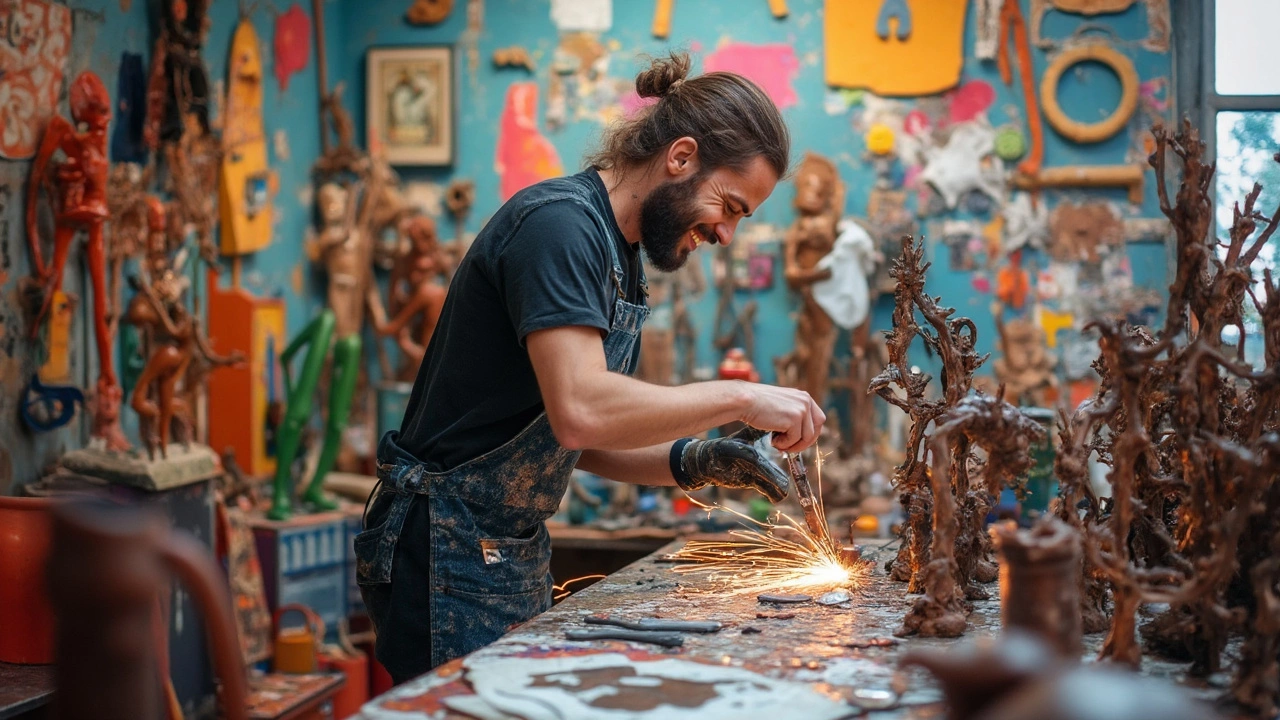
Essential Skills
So you're thinking about diving into the world of sculpture art? Awesome choice! But before you grab that chisel or lump of clay, let's talk about the nitty-gritty skills you'll need to get started.
First up, patience is key. Sculpting is not a quick process. It takes time to chip away at a stone or mold clay to perfection. If you rush it, you might end up with something that looks more like a potato than a masterpiece.
Then there's dexterity. You’ll need some steady hands, especially when working with fine details. Whether you're smoothing out plaster or chiseling a tiny feature, a sure grip makes a big difference.
An eye for detail can't be overstated. Seeing what's off-kilter and knowing how to fix it is crucial. And this isn't something you only learn in art school—it's more about practicing and training your mind to catch the little things that might throw off the big picture.
- Creativity: Sounds obvious, but thinking outside the box can turn a simple idea into something incredible.
- Knowledge of Materials: Understanding different materials and how they behave is super useful. Stone, metal, clay, each one’s got its quirks.
- Tool Mastery: Knowing which tool to use and how to handle it can make your job so much easier. Plus, it’ll save you from some unnecessary hand cramps!
Working on these skills will give you a solid base, whether you're aiming to become a traditional sculptor or a contemporary artist breaking new ground.
And hey, if you mess up, just try again. Every experiment, even ones that flop, teaches you something new. Keep at it, and who knows, you might just carve out a place for yourself in the art world!
Breaking the Mold
When it comes to sculpture art, breaking the mold isn't just a metaphor; it's a whole way of thinking. Some sculptors ditch the traditional path and turn everyday items or unconventional materials into jaw-dropping works of art. Ever seen a sculpture made out of old car parts or found objects? That's what we're talking about here.
A prime example of breaking the mold is the use of sustainable materials. In a world where recycling is so crucial, some artists have swapped stone and marble for leftover wood or recycled metals. Not only does it breathe new life into what would have been trash, but it also gives each piece a unique backstory.
Then, there are those who use digital tools to create sculptures. Thanks to technology, artists can now use software to design intricate pieces that are 3D-printed into the real world. It opens up possibilities that were unimaginable just a couple of decades ago.
Sculptors pushing boundaries also explore kinetic art, where movement becomes part of the sculpture itself. Wind, motors, and even the viewer’s interaction can make these pieces come alive, challenging what a sculpture can be.
If you're wondering how you can start breaking the mold in your work, consider these steps:
- Experiment with Materials: Don’t be afraid to try new or unconventional materials to see what unique textures they bring to your art.
- Integrate Movement: Think about how motion might change the viewer's experience of your sculpture.
- Leverage Technology: Use 3D modeling programs that allow you to visualize your concept before taking it to reality.
By breaking traditional boundaries, you make sculpture art more than just an object to look at; you create an experience or a conversation starter. So grab that random piece of scrap metal or fire up your computer and start creating something truly revolutionary!
Tips for Aspiring Sculptors
Jumping into sculpture art can feel a bit overwhelming at first. But with the right approach, you can ease into it like a pro. First off, it's essential to get comfortable with the different materials—from clay to metal—since each one has its quirks.
Starting small is key. You don’t need expensive stuff right off the bat. A simple clay pack can let you practice and figure out shapes and proportions. Once you’ve got the hang of it, you can slowly try out more challenging materials.
- Observe and Sketch: Spend time looking at objects and sketching them. This helps train your eye to see shapes and shadows better, which is super crucial when you're sculpting.
- Take a Class: While going solo can be exciting, learning from experienced sculptors makes a massive difference. Check out community courses or online tutorials to build your skills.
- Tools Matter: Good tools are a sculptor's best friend. Learn which tools work best for your selected material and practice with them. A good chisel or a sculpting knife can elevate your work tremendously.
- Embrace Mistakes: Not every creation will be a masterpiece, and that's okay. Each mistake teaches you something new, so don't sweat it if things go awry.
- Network with Others: Joining art communities or forums can offer inspiration and feedback. It’s crucial to share your work and get different perspectives.
Interestingly, about 72% of professional sculptors recommend doing collaborative projects. When teamed up with others, you can learn a ton, get fresh ideas, and maybe even pick up a trick or two that you wouldn't have thought of alone.
Remember, patience is your best tool. Rome wasn't built in a day, and neither will your art skills. Keep at it, and soon you’ll see your creations come to life!
